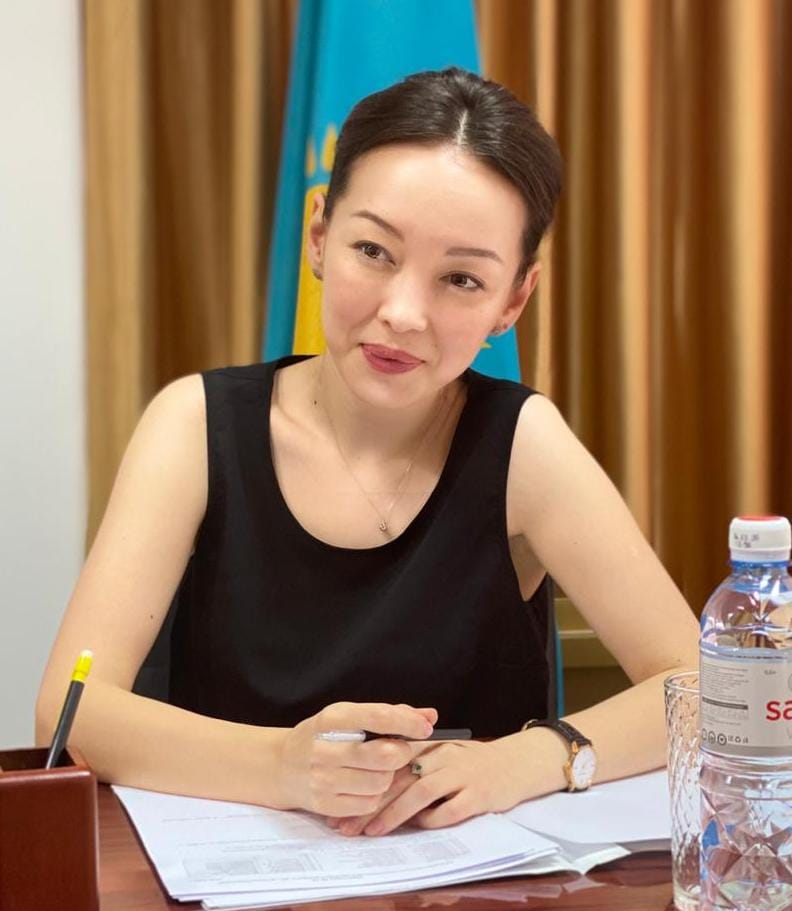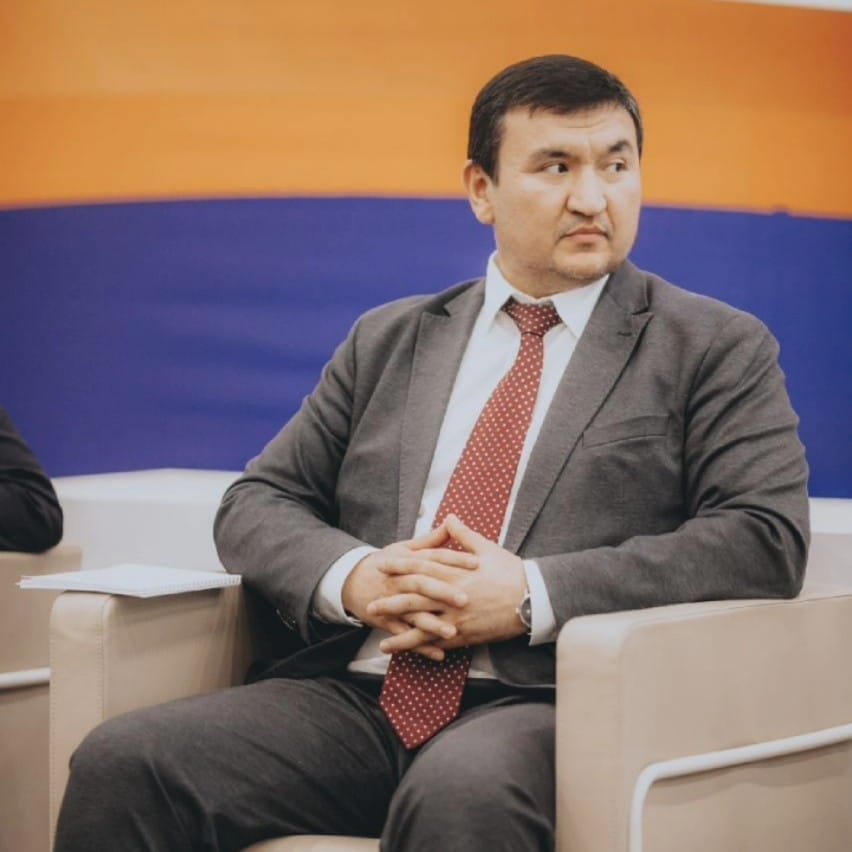
The government has announced plans to implement two large petrochemical projects, butadiene and polyethylene plants. The cost and project commissioning schedule have been announced. But how much does the country need these projects? Are they overpriced? Will they be implemented on time? Industry experts shared their opinions with Petrocouncil.
In Kazakhstan, a Comprehensive Plan for the development of the largest oil and gas and petrochemical projects for 2023-2027 was approved. According to this document, it is planned to implement 20 projects worth a total of $37.3 billion. They should help increase annual oil and gas production to 105.5 million tons and 82.1 billion cubic meters respectively.
The two petrochemical projects are planned: in Kazakhstan, namely, a butadiene production plant with a capacity of 149 thousand tons per year and a cost of $800 million should be commissioned in 2025 and the production of 1.25 million tons of polyethylene with estimated cost at $7.6 billion will be commissioned in 2028. Thus, the volume of production of petrochemical products in the country should more than double. Currently, the capacity of Kazakhstani companies producing aromatic hydrocarbons (benzene, paraxylene), polypropylene, lubricating oils and methyl tert-butyl ether is 1,350 thousand tons per year.
The fact that the polyethylene production plant (which has been talked about for more than 15 years) will finally be built became known literally in October of this year. The chairman of the Chinese corporation Sinopec, Ma Yongsheng, during a meeting with Kazakh President Kassym-Jomart Tokayev said that construction of the plant will begin in the second half of next year. At the same time, the national company KMG, Sinopec and the Russian Sibur signed agreements for the sale and purchase of a stake in Silleno LLP, the operator of the project. Now, KMG owns 40% of the company, Sinopec – 30%, Sibur – 30%.
The entry of a Chinese petrochemical giant gives more reason to believe that the project will be implemented and, most likely, with Chinese investments. The other projects as a polypropylene production plant worth $2.6 billion was built with a loan from the China Development Bank. Perhaps, the scale of the projects (production volume and cost) became the main reason for the long search for investors as well as implementation time.
Comparison with Coca-Cola
Zhanar Nazarbayeva, petrochemical expert:
‘At every forum or conference on oil and gas, one plenary session is always devoted to the analysis of petrochemicals. If five years ago all this was just a promising development strategy, a year ago you can hear about a really working case. Before the launch of the polypropylene production plant of the Kazakhstan Petrochemical Industries Inc (KPI) company in November last year, the Pavlodar Neftekhim plant was already operating in Kazakhstan, which also produces polypropylene (but 10 times less). That is, the production of polymer products in the country is gradually increasing.

Over the past few months, our price for polypropylene has been lower than in neighboring Russia or Uzbekistan. This satisfies Kazakhstani manufacturers and exporters of final products, but the price reduction may be done temporary to simply attract buyers and it is possible that in the future the price will increase. As a rule, the price of a product is reduced only in two cases: when there is no market to sell and when it is necessary to attract a client. Time will tell what were KPI’s plans, whether the company really cares about developing local production or it wants to monopolize the market. In any case, the plant can fully cover domestic demand with its products.
Our country needs these projects to produce butadiene and polyethylene. But as practice shows, announcing construction plans is one thing, putting them into practice is quite another. Even though, the country desperately needs the product, the start of its production may take many years. If we take the polyethylene project, it was initiated more than 10 years ago and all these years (a special company was created, a staff was recruited) the project did not happen. Now, we learn that the staff has been expanded for more than a year and basic design development is underway. The main question is – will they have time to prepare the FEED, and will construction begin in the summer of 2024? If yes, then the project can be completed on time. Perhaps, the Chinese and Russians will be responsible for the construction of the plant and the marketing of finished products. I think they will conclude offtake contracts even before commissioning. The Kazakhstani shareholder will be responsible for the marketing of goods on the domestic market. Although, I would really like Kazakhstani shareholder to be involved in export sales. But this is a key issue in the negotiation process. It is unlikely that they will give it to us.
It would be desirable to establish a full-cycle production when the plant not only produces one product but also collects plastic waste and produces secondary raw materials. This is in demand by large consumers of plastic containers. Large international companies such as Coca-Cola have started using recycled bottles to support their ESG agenda.’
Terms and markets
Askar Ismailov, oil and gas industry expert:
‘The key factor for any project is financing. As for the Butadiene project the chances of implementation are very high. This is related to the sales market. There is an understanding of where the products will be sold. As you know, Tatneft (the Russian company owns a 75% stake in Butadiene LLP) built a tire production plant in the Karaganda region. Cars and freight transport will be used for a long time. The issue of personnel development is also not a concern. Tatneft has similar plants in Russia where future plant employees can be sent and the size of the project does not fall into the large category. Quite feasible scale.

As for the Polyethylene project, there has been a lot of activity this year including in reducing sanctions risks. The Chinese Sinopec was invited to the project. The plant’s capacity is 1.25 million tons of polyethylene per year which creates a certain difficulty in export sales of products since domestic consumption in Kazakhstan is only 160-170 thousand tons per year. If we take into account that Turkey was considered as one of the key consumer countries, then they have already begun implementing a project for the production of polyethylene with a capacity of 2 million tons. Our northern neighbor (Russia) in Urengoy began construction of a deethanization plant with a capacity of 8 million tons. I can assume that at least half of the ethane will be used to produce polyethylene and already in 2025, ExxonMobil will commission a plant with a capacity of 2.5 million tons of polyethylene and polypropylene in the Dayawan Industrial Park in the Chinese city of Huizhou to serve domestic demand. Such prospects will have the impact on the sales market and the profitability of the Kazakh project.
Recently, there has been more and more talk that the implementation of the project will help employ about 2,000 people at the construction stage and about 800 people at the maintenance stage. This approach should not be used as a key one. The most important thing in any business is sales. If a project cannot payback within 10 years, then it is work for the sake of work and add to this the lack of clarity on raw materials from the Tengiz field. Production will begin to fall after 2034 and the composition of the gas will change. The amount of ethane in the gas will decrease and the content of hydrogen sulfide will increase. This is a different level of security that will require additional capital investment. Today, Tengizchevroil (the operator of Tengiz) provides guarantees only for 7 billion cubic meters of gas. We need more than 9 billion annually for the entire period of implementation of the project with a constant gas composition which is not realistic. Time will tell whether the decision on this project was correct.
The project may already face the problem of a shortage of qualified specialists at the construction stage. Of course, with the entrance of Sibur and Sinopec the issue will be resolved by attracting foreign personnel. Although, it is necessary to attract local workers. Also, the project may be affected by the bureaucratization of the state and quasi-state sectors which the Butadiene project has already encountered.
It is unknown where the money will come from to finance the project. If next year investors make a positive decision on its implementation, we will also see difficulties at the construction stage. Our specialists are already leaving for foreign projects where the payments are much higher than in Kazakhstan. It will be necessary to devote some more time to training personnel. My forecast is that if the project is implemented, the Polyethylene plant will reach its design capacity no earlier than 2030.’
Expensive and large
Oleg Pak, Chairman of the Kazakhstan Union of Chemical Industry:
‘In my opinion, all the projects that have been implemented in the petrochemical industry (and there are not many of them) have been implemented very poorly. For example, the same KPI plant. It took 12 years to build it. Although, construction of such projects usually takes about three years. They spent almost three times more for such type of project (the total cost of the project is $2.6 billion). The company’s capacity is 500 thousand tons, but it supplies only 20 thousand tons to the domestic market, the needs exceed 80 thousand tons. In fact, KPI did not bring any benefit to the domestic market. I’ll say even more, the company sells polypropylene to Kazakh consumers at a higher price than to Chinese and European consumers. Now it is cheaper to buy these products in China and bring them here than to buy them at KPI. That is, the company’s pricing policy is not aimed at the development of local production. The company explains this by a lot of costs, it needs to repay loans, pay interest on the loan, etc.

As for polyethylene, in my opinion, the economics of this project will be similar to the KPI plant. According to my data, today the country’s need for polyethylene is approximately 150 thousand tons per year and the plant’s capacity is 1.2 million tons. We are again building a very large plant at a huge cost which will work primarily for export.
It is good that we have polypropylene and will have polyethylene, but we must not forget that this is just the first stage of conversion. We must increase the localization of production and produce products with high added value. It is necessary to create conditions for such development which was not provided for during the implementation of the KPI project. Just a year ago, the company together with Sibur tried to draw up a Roadmap for the development of polypropylene consumption. It has not yet been approved. We do not have a vision of how domestic consumption should develop and how it will be possible to expand production and create new jobs.
Kazakh producers want KPI to sell them polypropylene at the same prices as it supplies to China (a price can be predicted for at least a year). Then, it would make sense to invest in production.
Currently, KPI supplies only 20 thousand tons to the domestic market and hundreds of thousands of tons to European countries and China. Accordingly, those who buy more are given a discount, but such a policy is not efficient. If there were a correctly structured long-term pricing policy, then today, perhaps, the needs of the domestic market would not be 60-80 thousand tons but maybe 150 thousand due to an increase in domestic processing and production.
The main goal of such strategic projects is to increase production of the domestic manufacturing industry, produce products with high added value and not export raw materials. We annually import about 50 thousand tons of polypropylene and 150 thousand tons of polyethylene.
In fact, Kazakhstan does not need to implement such large petrochemical projects. For one simple reason, we do not have enough raw materials. Why did it take so long to build the KPI (polypropylene) plant and now the Polyethylene project has problems? Mainly, due to lack of raw materials. We had to beg it from the transnational companies that are developing Tengiz, Kashagan and Karachaganak.
We need polymers, methanol, rubber, ammonia, etc., but we must also look at the economic feasibility of the project. Firstly, a strategy for further processing with the production of finished products must be clearly developed. Secondly, why we need to focus on the petrochemical if we have coal. The example of China shows that you can do everything from coal that you can do from oil and gas. China processes 220 million tons of coal a year and produce products worth $630 billion. This is three times our GDP. We just burn coal at thermal power plants, in metallurgy, etc. At the same time, we have enough coal reserves for 300 years and oil reserves only for 40-50 years.
The development of coal chemical industry would save our coal industry. Because it will stagnate since we signed the Paris climate agreement and there are plans for carbon neutrality and the coal generation will decrease and coal related projects are no longer funded.’
Consulting agencies, researchers and analysts voice different versions of the development of the chemical industry, but they all agree on one thing – global plastic consumption will continue to grow for the next 20-30 years. Mainly, due to the transport sector, construction industry and packaging market. It is obvious that Kazakhstan needs to develop polymer production taking into account the country’s raw material capabilities, but the question is how to develop it and for what purpose seems to remain open.
